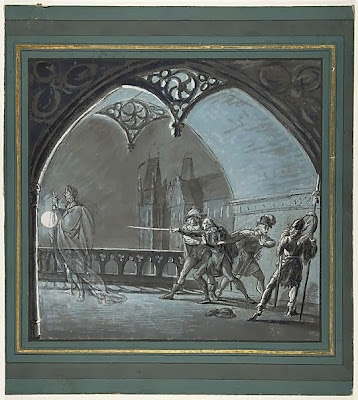Trick or treat... Witches and ghosts in Art.
4:09 p.m.
Since forever, Art has been a tool for the self-knowledge of men. It helps us live through the experience of good-beautiful-nice-happy, but also deal with monstrosity: bad-ugly-evil. The experience of monstrosity defines itself, at first, through fear, horror and anguish. It is a primitive and poor way of standing in fornt of that sinister thing that overflows us.
The behavior of the human being, till aproximately the 19th Century, has been ruled by rigid religious laws, which articulated the representation of order in the world. Trespassing the limits meant disobeying the cosmic order, which led to pride, audacity and madness. This explains why what could be considered as sinister had to remain hidden. The uneasiness caused by monstrosity pushes men towards a state of questioning and new comprehension. It borders what is real and requires exercises of reasoning.
Art portrays the extreme, always pushing limits, creating through excess.
Onoe Matsusuke as the Ghost of the Murdered Wife Oiwa, by Utagawa Toyokuni I (1812) - Japan
The presence of a ghost represents that other-ness, the occult that pours into the beyond.
In the following work, the experience of the extreme renders the soldiers to perplexity: they reach a point of ambiguity and doubt, that puches them to return to normality. The delay in that achievement results in madness. The ghost appears blurred, as something that, although there, should not be shown.
The Ghost of the King appearing to soldiers, from Hamlet - Anonymous (France, 19th century)
The sinister faces us against mystery, it's a struggle between the sacred and the profane. That's why the sinister is opposted to what's considered beautiful and harmonious. It horrifies human comprehension.
Witches' Sabbath, by Jacques de Gheyn II (Netherlands, 1565–1629 )
Men believed that a stalking and dangerous form of life, a "fantastic being", existed in the darkness, and protection was needed. Its sole existence caused fear...
Que viene el Coco (Serie "Caprichos"), by Francisco José
de Goya y Lucientes (1918)
de Goya y Lucientes (1918)
Technique: etching on paper / Measures: 36.1 x 26 cm - MNBA
Today, men do not seek the security provided by the idea of God: he has learned to live with the awareness of a known wisdom based on certainties. He is conscious of his weakness and limits and knows how to live with them.
Go on reading... "Estéticas de lo extremo" by Elena Oliveras & others. Emecé Arte, BsAs, 2013.











0 comentarios